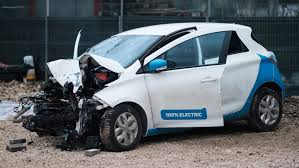Electric car accident rates have become a significant area of study as the adoption of electric vehicles (EVs) increases. Research indicates that, overall, electric cars tend to have lower accident rates compared to traditional gasoline vehicles, largely due to their advanced safety features and lower center of gravity, which enhances stability. However, the unique characteristics of EVs, such as their quiet operation, can pose risks, particularly for pedestrians and cyclists who may not hear them approaching. Additionally, factors such as driver behavior, regional infrastructure, and the percentage of EVs on the road can also influence accident rates. As more data becomes available, understanding these dynamics is crucial for improving road safety and developing targeted interventions. Overall, while electric cars show promise in reducing accident rates, ongoing education and awareness are essential to maximize their safety benefits on the road.

Electric car accident rates have garnered increasing attention as the adoption of electric vehicles (EVs) continues to rise globally. With the shift towards sustainable transportation, understanding the safety dynamics associated with electric cars is crucial for consumers, manufacturers, and policymakers alike. Research indicates that electric car accident rates are generally lower compared to traditional gasoline vehicles, a trend attributed to several key factors. One significant reason is that electric vehicles often come equipped with advanced safety features and technology that enhance overall driving safety. Features such as automatic emergency braking, lane-keeping assist, and adaptive cruise control are more prevalent in electric vehicles, helping to mitigate the risk of accidents. Additionally, the design of many electric cars, which typically have a lower center of gravity, contributes to improved stability and handling. This engineering advantage reduces the likelihood of rollovers and enhances the vehicle’s performance in various driving conditions.
In terms of policy implications, understanding electric car accident rates is crucial for developing regulations that promote safer roadways. As electric vehicles become more prevalent, city planners and transportation officials must consider how to accommodate the unique characteristics of EVs. This may include infrastructure improvements such as dedicated lanes for electric cars, enhanced signage, and public awareness campaigns aimed at educating all road users about the presence of EVs on the road. Additionally, insurance companies may need to adjust their models and premiums based on the evolving data surrounding electric car accident rates, ensuring that policies accurately reflect the risks associated with these vehicles.
In conclusion, electric car accident rates present a complex and evolving landscape that merits careful consideration from multiple stakeholders. As electric vehicles become a more significant part of the automotive market, understanding the factors that influence accident rates—such as safety features, driver behavior, infrastructure, and the quiet operation of EVs—will be critical for promoting safer roadways. With ongoing advancements in technology, including autonomous driving, the future of electric car accident rates holds both challenges and opportunities. By prioritizing education, awareness, and infrastructure improvements, we can work towards maximizing the safety benefits of electric vehicles while minimizing risks, ultimately contributing to a more sustainable and safe transportation ecosystem. The interplay of these elements will shape the future of electric mobility and its impact on road safety in the years to come.


















Great goods from you, man. I have understand your stuff previous to and you’re just too wonderful. I actually like what you have acquired here, really like what you’re saying and the way in which you say it. You make it entertaining and you still care for to keep it wise. I cant wait to read far more from you. This is actually a wonderful web site.
Your article helped me a lot, is there any more related content? Thanks!